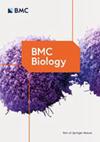Population suppression with dominant female-lethal alleles is boosted by homing gene drive
IF 4.4
1区 生物学
Q1 BIOLOGY
引用次数: 0
Abstract
Methods to suppress pest insect populations using genetic constructs and repeated releases of male homozygotes have recently been shown to be an attractive alternative to older sterile insect techniques based on radiation. Female-specific lethal alleles have substantially increased power, but still require large, sustained transgenic insect releases. Gene drive alleles bias their own inheritance to spread throughout populations, potentially allowing population suppression with a single, small-size release. However, suppression drives often suffer from efficiency issues, and the most well-studied type, homing drives, tend to spread without limit. In this study, we show that coupling female-specific lethal alleles with homing gene drive allowed substantial improvement in efficiency while still retaining the self-limiting nature (and thus confinement) of a lethal allele strategy. Using a mosquito model, we show the required release sizes for population elimination in a variety of scenarios, including different density growth curves, with comparisons to other systems. Resistance alleles reduced the power of this method, but these could be overcome by targeting an essential gene with the drive while also providing rescue. A proof-of-principle demonstration of this system in Drosophila melanogaster was effective in both biasing its inheritance and achieving high lethality among females that inherit the construct in the absence of antibiotic. Overall, our study shows that substantial improvements can be achieved in female-specific lethal systems for population suppression by combining them with various types of gene drive.同源基因驱动促进了显性雌性致死等位基因的种群抑制作用
利用基因构建物和重复释放雄性同源染色体来抑制害虫种群的方法,最近已被证明是一种有吸引力的方法,可以替代基于辐射的老式昆虫不育技术。雌性特异性致死等位基因大大提高了威力,但仍需要大量、持续的转基因昆虫释放。基因驱动等位基因会使其自身的遗传发生偏差,从而在整个种群中传播,这就有可能通过单次小规模释放实现种群抑制。然而,抑制驱动往往存在效率问题,而研究最深入的归巢驱动往往会无限制地传播。在这项研究中,我们发现将雌性特异性致死等位基因与同源基因驱动结合起来,可以大大提高效率,同时还保留了致死等位基因策略的自我限制性(因此也是局限性)。利用蚊子模型,我们展示了在各种情况下消除种群所需的释放量,包括不同的密度增长曲线,并与其他系统进行了比较。抗性等位基因降低了这一方法的威力,但可以通过针对重要基因的驱动来克服,同时还能提供拯救。该系统在黑腹果蝇中进行了原理验证,既能有效地偏向遗传,又能在没有抗生素的情况下实现雌性遗传构建体的高致死率。总之,我们的研究表明,通过将雌性特异性致死系统与各种类型的基因驱动相结合,可以大大改进用于种群抑制的雌性特异性致死系统。
本文章由计算机程序翻译,如有差异,请以英文原文为准。
求助全文
约1分钟内获得全文
求助全文
来源期刊

BMC Biology
生物-生物学
CiteScore
7.80
自引率
1.90%
发文量
260
审稿时长
3 months
期刊介绍:
BMC Biology is a broad scope journal covering all areas of biology. Our content includes research articles, new methods and tools. BMC Biology also publishes reviews, Q&A, and commentaries.
 求助内容:
求助内容: 应助结果提醒方式:
应助结果提醒方式:


